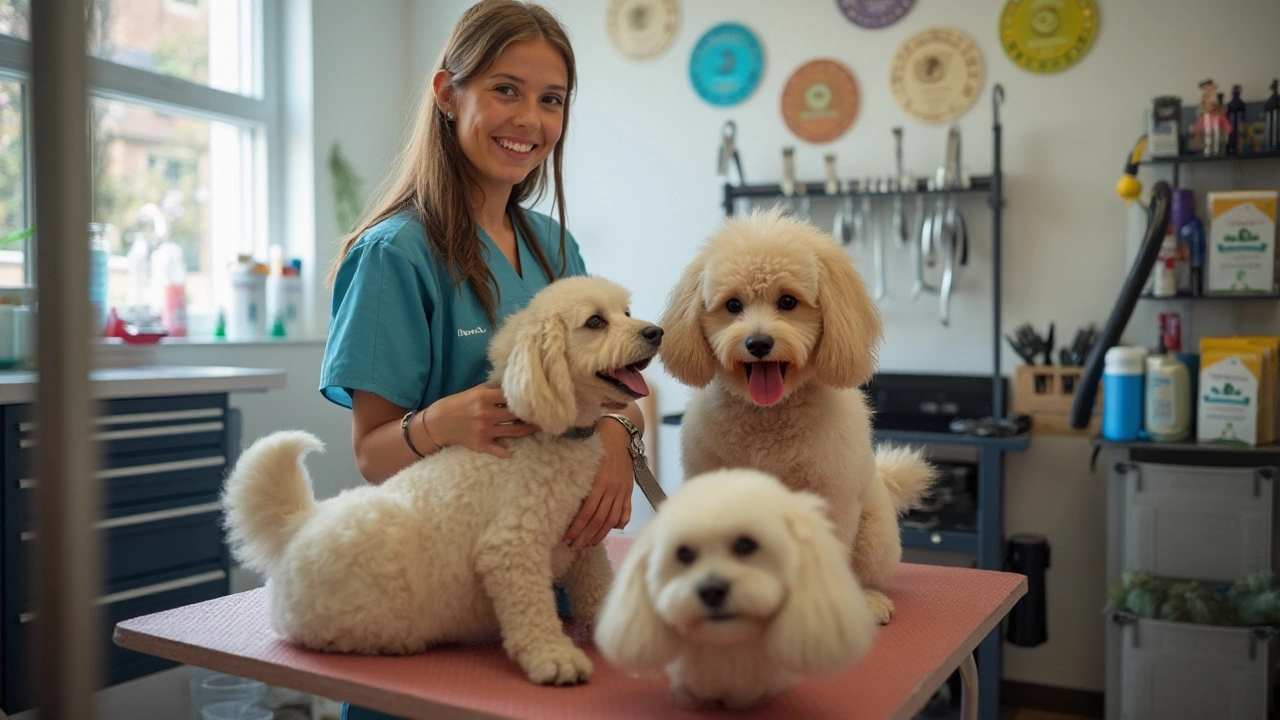Safe Dog Grooming: Simple Tips for a Happy Pup
Grooming doesn’t have to be a scary chore for you or your dog. When you set up the right environment, pick the proper tools, and move at a pace your pet likes, you’ll both enjoy the routine. Below are the basics that make grooming safe, stress‑free, and actually fun.
Prep Your Space and Tools
Start with a quiet room where your dog feels secure. A non‑slip mat on the floor helps prevent sudden slides that can spook them. Gather a brush suited to their coat type, a slicker brush for thick fur or a soft bristle brush for short hair. Keep nail clippers, dog‑safe shampoo, and a towel within arm’s reach so you don’t have to scramble mid‑session.
Before you even touch the brush, let your dog sniff it. A quick sniff lets them know it’s not a threat and gives you a chance to see how they react. If they’re hesitant, reward calm behavior with a treat and a gentle pat. This builds a positive association right from the start.
Gentle Grooming Techniques
When you begin brushing, use slow, long strokes that follow the direction of hair growth. Start at the neck and work your way down, pausing if you see any mats. If you hit a knot, don’t yank it out—use a detangling spray or a wide‑tooth comb to loosen it gradually. The key is to keep pressure light; a shaky hand can cause skin irritation.
Bath time should be warm, not hot, and the water level should stay below the belly to avoid choking. Wet the coat with a cup or handheld sprayer, then apply a small amount of dog‑safe shampoo, lather, and rinse thoroughly. Any leftover soap can cause itching later.
Drying is often where anxiety spikes. Use a towel to blot the fur first, then a low‑heat dryer if your dog tolerates it. Keep the dryer moving and never point it directly at the face or ears. Speaking of ears, check them for redness or wax before cleaning. A cotton ball dampened with a vet‑approved ear cleaner does the trick—never insert anything deep into the ear canal.
Nail trimming is another common stress point. Trim only the clear part of the nail; the pink “quick” contains nerves and blood vessels. If your dog has dark nails, trim a little at a time and look for a tiny black dot that marks the quick. Have styptic powder ready in case you nick a nail.
Throughout the whole session, watch your dog’s body language. A wagging tail, relaxed ears, and soft eyes mean they’re comfortable. Tense muscles, growling, or trying to escape signal you need to pause, give a treat, and maybe try again later. Short, frequent grooming sessions are better than one long, stressful marathon.
Finally, end on a high note. Offer a favorite treat, a short play session, or a cuddle. This tells your dog that grooming is just another part of a happy day, not a threat.
By keeping the space calm, using the right tools, and moving at your dog’s pace, you’ll turn grooming into a safe, bonding experience. Stick to these steps and watch your pup strut out looking clean, comfortable, and confident.
Posted By Bryndle Redding On 21 Jan 2025 Comments (0)
Identifying the Safest State for Dog Grooming Experiences
Dog grooming safety varies across different states, with some offering a more secure environment for both pets and groomers. Understanding regulations, examining facilities, and recognizing the importance of certified groomers are crucial steps for ensuring your furry friend's safety. Tips on choosing the best grooming practices and insights into the states known for their dog-friendly laws will help pet owners make informed decisions. Ensure your dog receives the safest grooming experience by being informed about what each state offers in terms of safety standards and practices.
READ MORE